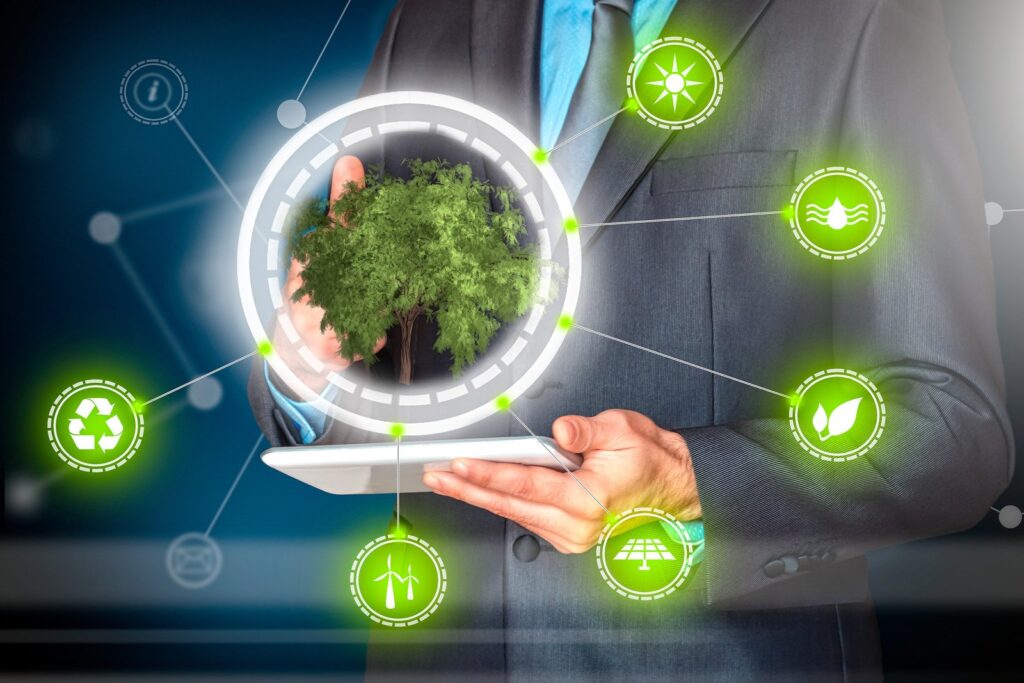
Sustainability
Sustainability is often an overused term for different issues related to keeping a building operating safely and efficiently in an ever-increasing complex world. Durability is another term that is a little more defined and includes some more easily understood specifics. Sustainability is more than architectural design. It encompasses building durability, improved lighting systems, thermal conditions, and improved indoor air quality. Together, occupants residing or working in these buildings can experience improved health, reduced stress levels, and a better quality of life. By increasing energy efficiency, sustainable green buildings can reduce the environmental impact on resources, making for a more sustainable planet.
Green Building Energy Sustainability (GBES) uses knowledge and technology to help locate problems and address them before they become problems that will affect the building structure and occupants living and working in these buildings.
Water intrusion into the building affects the longevity and usefulness of the building. GBES uses Infrared technology to locate water leaks from roofs, walls, and internal components before they can damage the structure and create hazards in the construction for the occupants. Infrared Roof Scans are used on low-sloped roofs to locate water leaks in the roof membrane that can leak into the building and cause structural damage and indoor air quality issues. This exciting use of technology has challenges based on the type of roof membrane, underlying insulation, and roof decking needs experienced Level I or Level II Thermographers to understand the situations and structure and apply the proper protocols to get valuable results. Infrared Water Intrusion Scans use the same Infrared science applied to other structural components in the building to locate water leaks. This is why GBES uses engineers that are certified thermographers for this type of work. Professionalism, knowledge, and experience work hand in hand for a better future.
Property Insurance companies have adjusted their risk assessment policies to cover building expansion and the potential for problems that this can create on electrical systems. As our electricity use increases, electrical components’ loads and criticality have increased. A revolutionary change in philosophy is happening, expanding the need for Infrared Electrical System Scans to catch issues before they become problems that can affect a building. As electrical systems are expanded or more heavily loaded, these issues can show up as heat in the electrical panels, breakers, electrical components, motor controllers, and motors. Routine Infrared Electrical scans can locate these issues before failures that can result in property damage and insurance claims. GBES uses Level II and Level III Thermographers to scan electrical components to discover those issues before they become problematic.
Expansion of buildings requires structural beams and columns to be tied together for structural integrity. Infrared Block Wall Scans can locate beams, columns, and other structural components to connect the expansion to those critical components. Our engineers and Level I and Level II Thermographers can help you find those vital components in your existing block wall structures. These scans can also be used on new facilities to ensure you get the structural integrity that your architect and engineers are designing for your building.
Stucco has become a common exterior cladding material across the country. The hard coat or synthetic coat stucco is designed to resist water intrusion and keep the structural materials dry and robust. Unfortunately, the details may have been poorly completed, and water leaks into the building and damages the structure behind the stucco cladding. GBES engineers use national protocols to locate and document that damage so solutions and repairs can be made. GBES Stucco Inspections by an independent 3rd party remove conflicts of interest by builders and stucco application companies with a vested interest in minimizing the potential problems.
After a building has been used for many years, systems get replaced, and personnel changes happen that allow the building to become less energy efficient than designed initially or planned. Our team of engineers can help Recommissioning your building by reviewing and testing the building and building systems. Ongoing monitoring and verification can help keep your building tuned efficiently for future usage.
We aim for a sustainable building to improve its long and useful life. If GBES can help you evaluate your existing building or plan for the construction of a new building, please give our staff of Engineers a call to start on your project. Our Office number is 940-808-1430
We have a dedicated phone for our Spanish-speaking clients. If we can answer questions or schedule an inspection, please give us a call at 682-246-8150.
